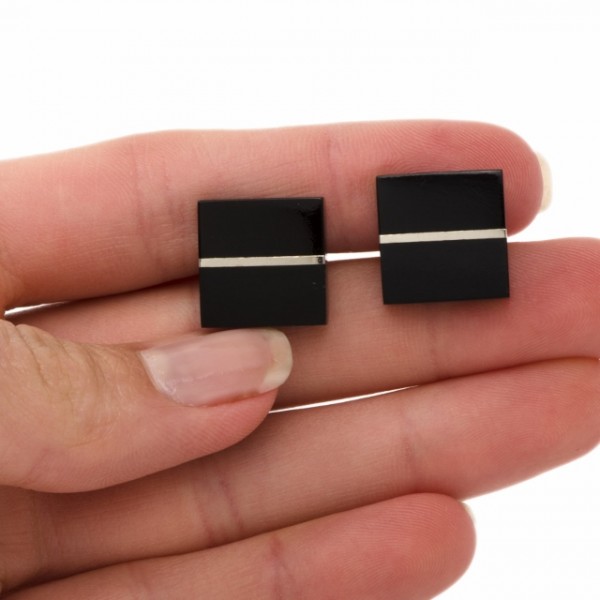
The Aesthetic period in antique jewelry (encompassing the years 1880–1901 can be defined as one founded on the rejection of the previous two phases of Queen Victoria’s reign. It was a reaction to disillusionment with fashions and furnishings and a search for a way to move out of the conventions of the past, towards more refinement in engagement rings and statement pieces.
Whimsical motifs such as griffins and dragons, crescents, moons and stars, butterflies and salamanders were crafted into jewels that were crowned by recently discovered diamonds from African mines, creating pieces of astounding beauty that can be found in the most beautiful estate jewelry collections.
Aesthetic antique jewelry : New Dawn for Women
If there is a historical milestone which can be linked to the aesthetic period, it can only be the growing predominance of women in the social arena of a very patriarchal Victorian society, involving themselves in activities such as outside activities and `politics.Young women were going to college and taking an active interest in sports and leisure activities. Fashionable women wanted to achieve the impression that they were a bit naughty or frivolous thus showing the world they were modern!
They founded the Primrose League in 1885 and the Women’s Liberal Federation in 1886, working earnestly toward achieving the voting right . The famous Gibson girl hairstyle, depicted in 1890 in drawings by Charles Dan Gibson portrayed women in this new light.
The Gibson Girl becoming the Fashion Symbol for End of the Century Women
The “Gibson Girl” was considered independent, fun-loving, self-aware and self-assured. Hair combs, often carved from tortoise shell and embellished with gemstones were essential accessories for this “modern” hairstyle.. New sporting activities for women, such as riding on bicycle and golf led to dramatic feminine wardrobe adjustments. Keeping the hands free, long chains held coin purses, watches and lorgnettes. Whistle bracelets were a must for ladies who took long rides by themselves.
An Innovative Time for Jewelry
The new generation of aesthetic jewelry designers were appalled by the blatant copying of historic jewels and heavy handed creations of their predecessors. They sought to break with the tradition and create something completely new. Soft curves and natural shapes with more delicate coloring were the result of this overreaction to the past. Gemstones were cut en cabochon with a preference for amethysts, emeralds and opals.
Role of International Exhibitions in Introducing Innovations:
Throughout the 19th Century international exhibitions played a major role in introducing the public to innovations in art and industry. Celebrating the 400th Anniversary of the discovery of America, Chicago hosted the 1893 Colombian Exposition. The highlight of the show was electricity. Visitors to the show were awestruck by fabulous, illuminated displays by some of America’s top designers like Tiffany and Gorham. Case after case of Victorian chains, rings, bracelets, earrings, and watches were met with great enthusiasm. The jewelry was lighter and on a smaller scale than in previous years. Weighty Victorian brooches were replaced by smaller pins scattered on the bodice of a dress and diamond brooches were often worn in the hair for evening. Small stud earrings were desirable as the latest Victorian hairstyles exposed the ears.
Achieving a more Simple Look in Jewelry
Those seeking the new aesthetic were influenced by a myriad of different events and people. Sarah Bernhardt, starring in Cléopatre, wore Egyptian motif jewelry with turquoise set in silver for the role, fueling a revival of Egyptian styled jewelry. Jewelry from India also became popular after the eye catching displays of this style at the Exhibition of 1886. English jewelers did not try to copy it as they had the work of the Greeks and Etruscans. The fact that this jewelry was entirely handmade with a lack of symmetry and precision appealed to those seeking something fresh. In an up-cycled jewelry trend that appeared c. 1885-1889, hand pierced escapement covers removed from verge watches made circa 1600-1700’s, originally designed to protect a watch’s balance wheel and staff, were re-purposed into earrings, bracelets and pendants.
There was a transformation of style to a simplified look with a featured gemstone. Jewelers were providing a good selection of precious stones for their customers. Diamonds were still the preferred gem for special occasions and diamond rivières, tiaras and bracelets set in silver-topped gold were the most popular items.. In the late 1880’s, advancements in jewelry manufacturing made platinum a viable metal, becoming quickly a favorite precious metal for diamond mountings.
.


